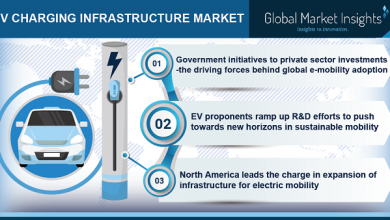How Is GIS Helpful for the EV Industry?

Geographic Information Systems (GIS) have revolutionised how we manage and analyse data. In
the past 20 years, the field of GIS has evolved from a command-line interface to cloud-based
tools. With GIS, we can capture, store, manipulate, analyze, and visualize geographic data,
enabling us to make informed decisions based on location-based insights. GIS has become an
indispensable tool across various industries, from urban planning and sustainable development to
natural hazard mitigation, natural resource management and transportation planning.
One such industry where GIS is proving to be a game-changer is the electric vehicle (EV)
industry. As the demand for sustainable transportation solutions continues to surge, the EV
industry is at the forefront of this revolution. With electric vehicles offering numerous benefits,
such as reduced emissions and lower operating costs, the potential for this industry is immense.
However, handling and charging an automated electric vehicle is a daunting task, not to mention
the infrastructure needed to support its usage.
This is where GIS comes in. With GIS technology, we can identify the ideal locations for electric
vehicle charging stations by analyzing population density, traffic patterns, and existing
infrastructure. GIS can ensure that the infrastructure for EV charging is optimized, efficient, and
sustainable. As the EV industry continues to grow, so will the role of GIS in shaping its future.
What Is Geospatial Technology? How Is It Connected with the EV Industry?
Geospatial technology, a superficial superset of GIS, is a set of tools and techniques used to
collect, analyze, and visualize geographical data. It encompasses various technologies, such as
GIS, Global Navigation Satellite Systems (GNSS), remote sensors, and mobile devices. These
technologies are used for mapping the earth, analyzing spatial relationships, and tracking the
movement of people and objects. GIS mapping and analysis, Activity-Based Intelligence (ABI)
predictive analytics, and other such applications of geospatial technology have become
indispensable tools, especially because of their ability to power GPS navigation and tracking. For
EV infrastructure planning, the usage of GIS and geospatial tech is crucial. Here are just a few
ways GIS modelling is used in the EV industry.
● Optimal Charging Station Placement
To determine the optimal locations for electric vehicle charging stations, we need to first collect
data on the existing charging infrastructure, including the number and location of charging
stations, the types of charging connectors available, and the charging capacity of each station.
This data is then complemented by demographic information on the area, such as population
density, transportation patterns, and the number of electric vehicles currently on the road.
The powerful combination of GIS and Bayesian Network (BN) can then be utilised to identify
potential locations for charging stations that benefit both the environment and EV users. GIS
provides a sophisticated and dynamic platform for analyzing spatial data, while the BN model
considers various factors, such as power availability, installation costs, parking space
availability, and environmental impact.
The robustness of the BN model allows it to consider various probabilities of events and their
inter-relationships. Moreover, the model ensures that the installation of charging stations is
optimally placed to meet the high demand for charging stations in areas with a large population
of EV users.
● Optimizing EV Routing (Fleet Management)
GIS is a powerful tool that enables the seamless integration of spatial data and the analysis of
spatial relationships. For electric vehicle (EV) manufacturers, GIS presents an opportunity to
identify the most efficient routes for their vehicles. Unlike fuel-based vehicles, EV route
planning has additional obstacles because the route requires functional charging stations at
regular intervals, especially right now with limited stations in India. Therefore when determining
the optimal route, normal road conditions and shortest path calculation are not enough.
Environmental restrictions, operating costs, maintenance costs, equipment installation costs, and
charging infrastructure are other factors that need to be analyzed.
With geospatial tools, we can collect real-time data about the available charging stations,
functional powering points, traffic patterns, and road conditions.
The most common routing algorithm used is Dijkstra’s algorithm, based on finding the shortest
path between two points in a graph. Another algorithm used by GIS, which would be more useful
in EV route planning includes the A* algorithm, which is an extension of Dijkstra’s algorithm. It
also calculates the shortest path between two points in a graph but also takes into consideration
obstacles. The A* algorithm works by considering the path’s cost and the destination node’s heuristic value (the heuristic value measures how close the destination node is to the goal node.) The A* algorithm then uses this information to select the path with the lowest cost and the shortest distance to the goal node. We can put in all the necessary requirements as obstacles to
calculate the accurate cost of each route.
Finally, the Genetic Algorithm is an optimization technique GIS uses to find the optimal solution
to a problem. This algorithm works by creating a population of solutions and then using a
process of selection, crossover, and mutation to create new solutions that are better than the
original ones. The algorithm then continues to iterate it to find the most optimal one.
Furthermore, GIS can monitor the route and provide real-time updates on any changes or issues
that may arise. This not only helps ensure the passengers’ safety but also enables the EV
manufacturers to make necessary adjustments to the routes, thus increasing operational
efficiency.
● Analyzing the Impact of EVs on the Grid
The utilization of GIS in analyzing the impact of EVs on the grid requires mapping out charging
station locations. This fundamental step is crucial in identifying areas with high electricity
demand and subsequently planning for the placement of new infrastructure or upgrades to
existing infrastructure.
GIS technology is pivotal in predicting future electricity demand by analyzing data on the
number of EVs on the road, their charging patterns, and the anticipated growth of the EV
industry.
Aside from the technical aspects of analyzing the impact of EVs on the grid, there are other
critical factors to consider. One of these factors is the cost of electricity, which is directly
proportional to the demand for electricity. As more EVs are introduced into the market, the
electricity demand will increase, which could lead to higher consumer prices. Therefore, utilities
and governments need to consider balancing the increased demand for electricity with the cost of
providing it.
Another crucial factor to consider is the impact of EVs on the grid during peak demand. This
scenario could lead to the grid being unable to handle the increased load from EVs. Utilities need
to consider how to manage the demand for electricity during these periods, such as by
implementing time-of-use pricing or incentives for charging during off-peak hours. This approach would ensure that the grid can handle the increased load from EVs without affecting
the reliability of the power supply.
Calculating the impact of all these factors requires large amounts of data and GIS mapping plays
an uncontested role in the collection and analysis of this data.
● EV Sales and Marketing
The utilization of GIS can greatly aid the sales and marketing of electric vehicles by providing
in-depth demographic information about potential customers. By analyzing demographic data,
such as income, education level, age group, and lifestyle EV companies can better understand
their target market and develop more effective marketing strategies. For example, with the help
of GIS, you can identify areas with high concentrations of environmentally conscious consumers,
one of the key target users of electric vehicles and create targeted sales funnels and marketing
strategies.
Moreover, GIS modelling can predict the future adoption rates of EVs in different regions based
on demographics, income levels, and transportation patterns. This information can help plan
future infrastructure needs and identify areas that may require additional incentives to encourage
EV adoption. GIS can also furnish indispensable information regarding infrastructure and
transportation networks. Electric vehicle manufacturers and marketers can leverage this data to
chart out routes for electric vehicle test drives and marketing campaigns.
Furthermore, GIS can play a key role in the competitive analysis of electric vehicle marketers.
By mapping the locations of competitors’ dealerships and sales outlets, companies can evaluate
the strengths and weaknesses of their competitors’ sales strategies and adjust their strategies
accordingly. GIS is an indispensable tool for businesses seeking an edge in the highly
competitive electric vehicle market.
● Renewable Energy Integration
Using renewable energy sources in powering electric vehicles (EVs) is a sustainable solution that
reduces dependence on fossil fuels. By analyzing the potential for renewable energy in different
regions, GIS can help the EV industry reduce its carbon footprint and become even more
sustainable. This can be achieved by utilizing solar, biomass, wind, and hydropower as
alternative energy sources.
GIS modelling can be used for identifying the most suitable locations for renewable energy
generation. For instance, wind turbines prove most effective in areas with high-speed winds,
while solar panels are most efficient in regions with strong sunlight. We can create smart grids (a
smart grid is an advanced power system that leverages digital technology to manage the flow of
electricity from various sources to consumers) using GIS to integrate renewable energy sources
into EV charging infrastructure planning.
By adopting these innovative technologies, we can achieve a sustainable future, reduce carbon
emissions, and promote the use of renewable energy resources. Integrating GIS technology in
renewable energy and EVs is a smart and efficient approach well-suited for the challenges of the
modern world.
Wrapping Up
GIS modelling has proven invaluable in the EV industry. The ability to predict and analyze the
distribution and demand of EV charging stations have allowed for more efficient and effective
planning and deployment of these stations. This technology has also helped identify areas with
inadequate charging infrastructure, allowing for targeted investment and expansion. As EV
demand rises in India, GIS modelling will shape the industry’s future. With its ability to provide
data-driven insights, it is a powerful tool that will drive the growth and success of the EV
industry for years to come.
About the Author:
Ashu Raheja with 15 years of experience is committed to democratizing location intelligence with the industry-disrupting technology built by Intents Mobi. She is responsible for sales, client relations, and marketing at Intents Mobi.





